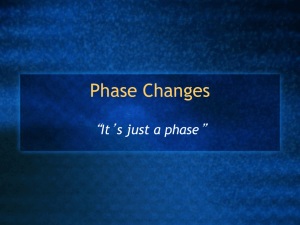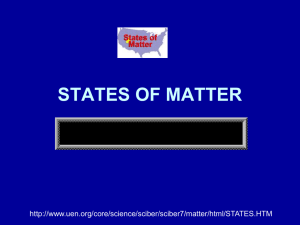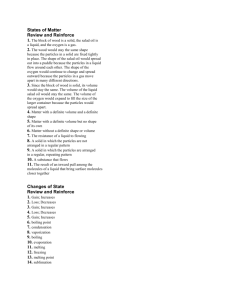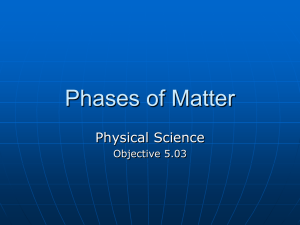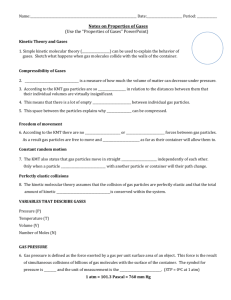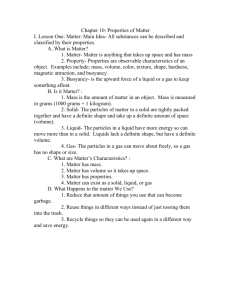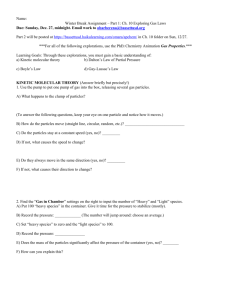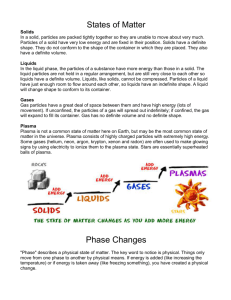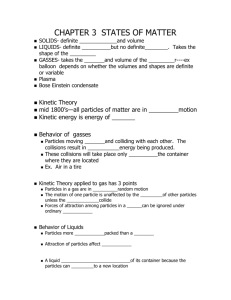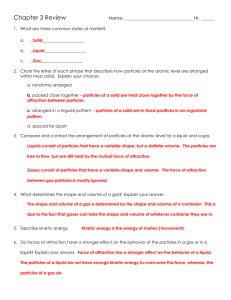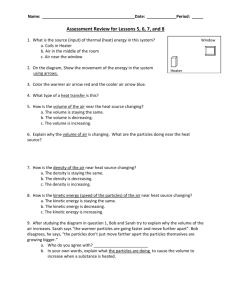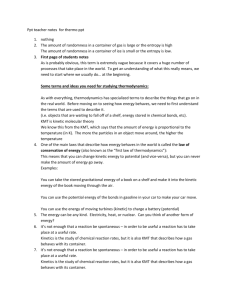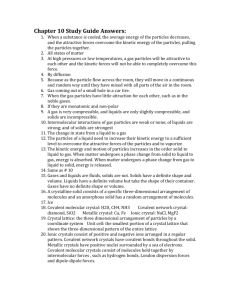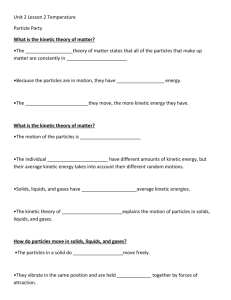Notes on Chapters 2
advertisement
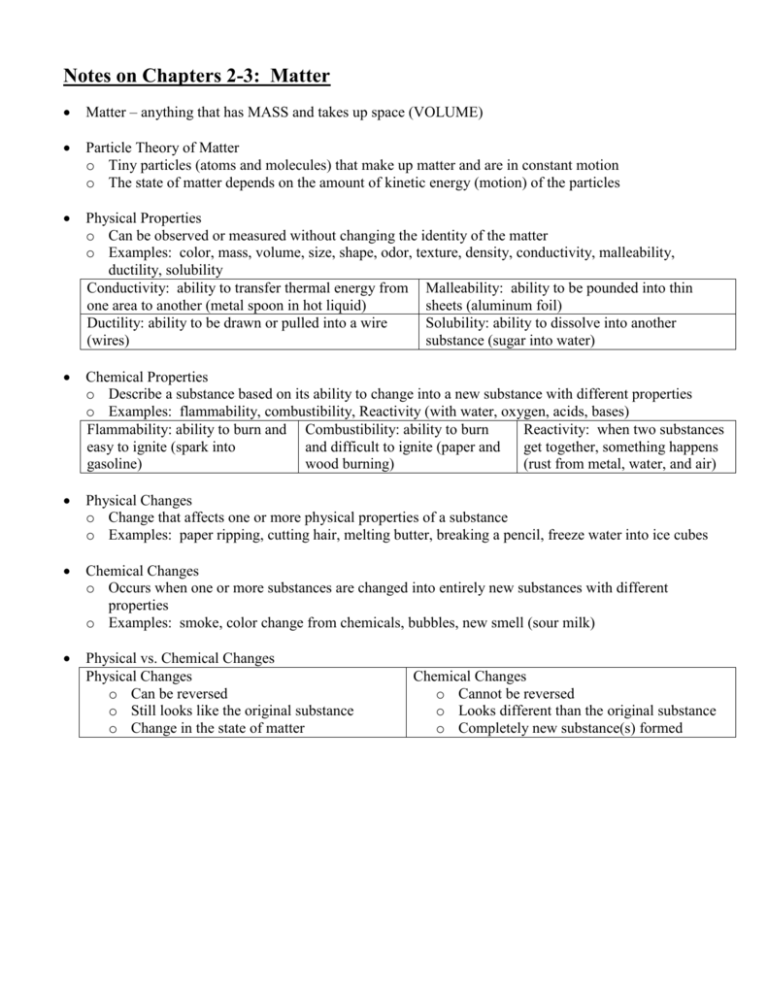
Notes on Chapters 2-3: Matter Matter – anything that has MASS and takes up space (VOLUME) Particle Theory of Matter o Tiny particles (atoms and molecules) that make up matter and are in constant motion o The state of matter depends on the amount of kinetic energy (motion) of the particles Physical Properties o Can be observed or measured without changing the identity of the matter o Examples: color, mass, volume, size, shape, odor, texture, density, conductivity, malleability, ductility, solubility Conductivity: ability to transfer thermal energy from Malleability: ability to be pounded into thin one area to another (metal spoon in hot liquid) sheets (aluminum foil) Ductility: ability to be drawn or pulled into a wire Solubility: ability to dissolve into another (wires) substance (sugar into water) Chemical Properties o Describe a substance based on its ability to change into a new substance with different properties o Examples: flammability, combustibility, Reactivity (with water, oxygen, acids, bases) Flammability: ability to burn and Combustibility: ability to burn Reactivity: when two substances easy to ignite (spark into and difficult to ignite (paper and get together, something happens gasoline) wood burning) (rust from metal, water, and air) Physical Changes o Change that affects one or more physical properties of a substance o Examples: paper ripping, cutting hair, melting butter, breaking a pencil, freeze water into ice cubes Chemical Changes o Occurs when one or more substances are changed into entirely new substances with different properties o Examples: smoke, color change from chemicals, bubbles, new smell (sour milk) Physical vs. Chemical Changes Physical Changes o Can be reversed o Still looks like the original substance o Change in the state of matter Chemical Changes o Cannot be reversed o Looks different than the original substance o Completely new substance(s) formed Four States of Matter: Solid, Liquid, Gas, Plasma Solids o Particles are held close together by strong atomic forces between the particles o Not enough kinetic energy for particles to change position o Definite shape and volume o Does not take the shape of its container Liquids o Particles are very close together o Have enough kinetic energy to flow over and around each other but not enough to separate completely o Liquids are able to spread out and flow o No definite shape, but a definite volume o Takes the shape of its container Gases o Particles have more kinetic energy than liquids and can separate completely from one another o Gas particles spread apart to evenly fill a container o No definite shape or volume o Takes the shape of the container and can be compressed into a smaller volume Plasma o Gas-like mixture of positively and negatively charged particles o At high temperatures, particles collide so violently they break into smaller charged parts. o Most common form of matter o Examples: sun, stars, fire, lightning, northern lights, nuclear explosions


